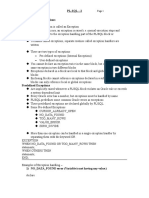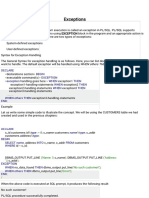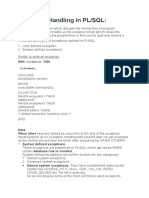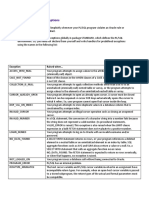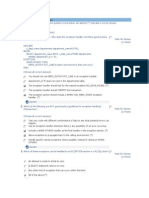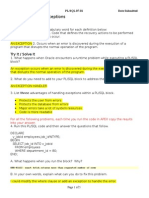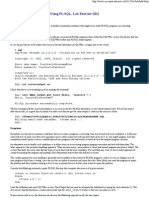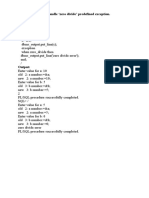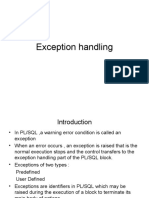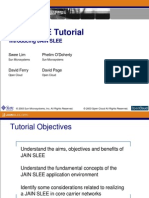0% found this document useful (0 votes)
97 views11 pagesPL/SQL Exception Handling Guide
The document discusses exception handling in PL/SQL. It provides examples of different types of exceptions like NO_DATA_FOUND, TOO_MANY_ROWS, VALUE_ERROR, ZERO_DIVIDE. It also discusses user-defined exceptions and how to declare and raise them. Pre-defined exceptions provided by Oracle like NO_DATA_FOUND, INVALID_NUMBER, LOGIN_DENIED are also summarized along with their error codes.
Uploaded by
Antriksh ShindeCopyright
© © All Rights Reserved
We take content rights seriously. If you suspect this is your content, claim it here.
Available Formats
Download as DOCX, PDF, TXT or read online on Scribd
0% found this document useful (0 votes)
97 views11 pagesPL/SQL Exception Handling Guide
The document discusses exception handling in PL/SQL. It provides examples of different types of exceptions like NO_DATA_FOUND, TOO_MANY_ROWS, VALUE_ERROR, ZERO_DIVIDE. It also discusses user-defined exceptions and how to declare and raise them. Pre-defined exceptions provided by Oracle like NO_DATA_FOUND, INVALID_NUMBER, LOGIN_DENIED are also summarized along with their error codes.
Uploaded by
Antriksh ShindeCopyright
© © All Rights Reserved
We take content rights seriously. If you suspect this is your content, claim it here.
Available Formats
Download as DOCX, PDF, TXT or read online on Scribd
/ 11





